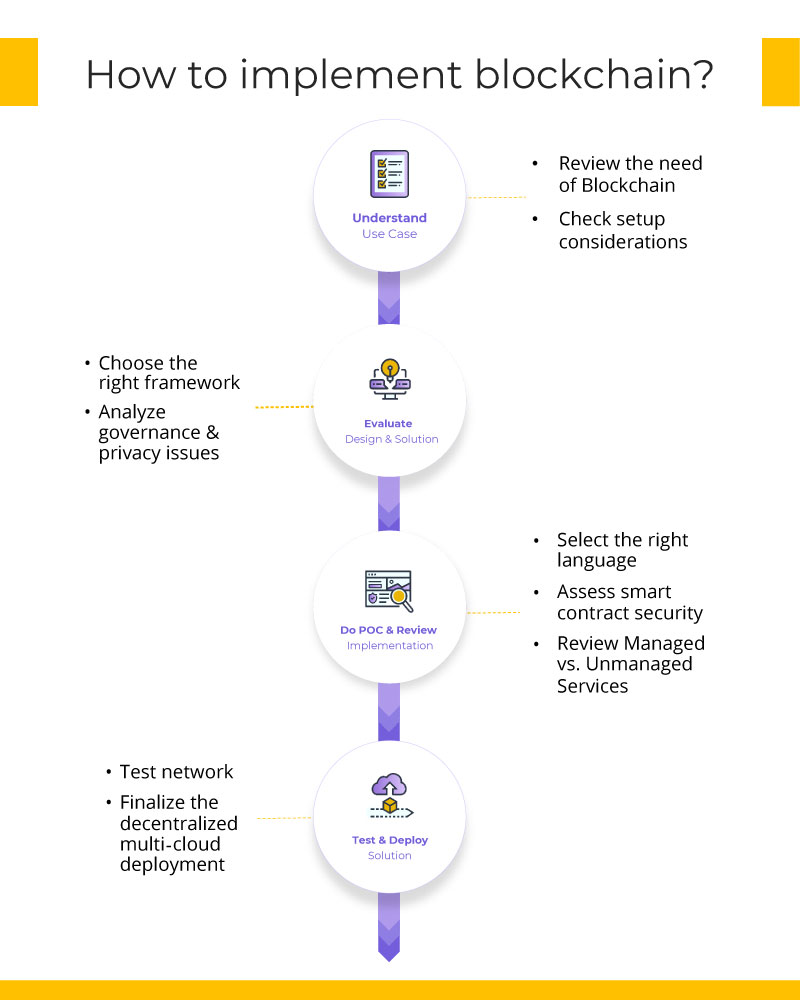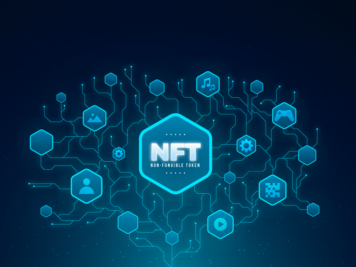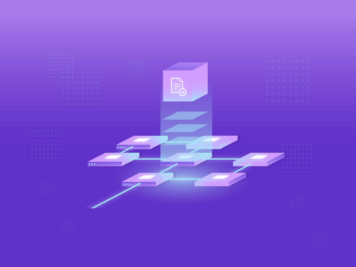The technology world is experiencing a surge in innovation, with blockchain technology leading the way. With a projected valuation of $17.57 billion in 2023 and a compound annual growth rate (CAGR) of 52.8% from 2024 to 2032, blockchain technology is expected to transform a multitude of sectors. A prominent example of this disruption is the thriving non-fungible token (NFT) market – it’s booming thanks to the blockchain implementation!
Erick Calderon, while explaining Art Blocks at The Marfa Art Gallery in October 2021, never imagined that his ideas would send shock waves through the artist communities.
But they did.
Art Blocks is not for artworks with brushes and chisels. It is a platform where contributors can cash in on the NFT craze and fetch astronomical prices for their digital arts. Christie’s is also selling NFTs. Recently, they sold Beeple’s Everydays: The First 5000 Days at a whopping $69,346,250. But why are NFTs so valuable?
A simple explanation could be blockchain as these are unique cryptographic tokens on a blockchain and cannot be replicated.
What is Blockchain?
Blockchain can be defined as a distributed database that acts as an immutable ledger. It helps in recording transactions and tracking assets in a business network.
A blockchain stores digital information together in blocks with certain storage capacities. When these are filled, they get linked to the previously filled block to form a chain of data known as the blockchain. Whatever comes next gets added into a fresh block, which then gets linked to the previous one to maintain the chain’s continuity. Its role is immensely valued in maintaining a secure and decentralized ledger of transactions.
Blockchain transactions get recorded with a hash, which is an immutable cryptographic signature.
Blockchain: A Brief History
NFTs are one of the many impacting use cases of blockchain. Blockchain came into being as an idea in 1991 when research scientists Stuart Haber and W. Scott Stornetta developed a system based on the cryptographically secured chain of blocks where they stored time-stamped documents so that they could not be backdated or tampered with.
In 1992, Merkle Trees were incorporated into the design, which makes blockchain more efficient by allowing several documents to be collected into one block.
In 2008, Satoshi Nakamoto (pseudonym of the person who wrote the Bitcoin whitepaper) developed the theory of distributed blockchains. In his design, adding blocks to the initial chain is easier as the system does not require the signature of the trusted parties. Nakamoto’s distributed blockchain uses a peer-to-peer network for timestamping and can be managed without permission from the central authority.
Nakamoto’s design has now become the cornerstone of cryptocurrencies.
Why Blockchain?
In 2021, El Salvador announced that it will accept cryptocurrencies for legal tender. There are organizations in other countries like the US, Canada, Australia, and Israel that accept Bitcoin or similar currencies for small business transactions. Some of the developing nations are also on the verge of accepting cryptocurrencies to counter global inflation and remittance fees charged by financial mediums. Words about countries planning to launch their own cryptocurrencies which they can control are also doing rounds.
Better blockchain architecture is now the need of the hour for many industries, which has triggered an influx of investments. The global blockchain technology market size is all set to reach $7.59 billion USD by 2024. In the healthcare sector alone, blockchain would reach around $829 million USD by 2023. Along with these sectors, others like finance, agriculture, defense, and retail are also going to increase their blockchain-related investment to be future-ready. This rapid permeation of blockchain across industries has transformed the startup ecosystem. Venture capitalists are quite excited about this and that gets reflected in the funding amount they channeled towards blockchain startup companies in 2020. It was close to $2.3 billion USD.
Yes, there are controversies around blockchain. Countries have alleged that mafias and terrorists can use this tech as a shield for their illegal activities as tracing back the origin of a transaction is exceedingly difficult in Blockchain. Then why are its advantages outweighing its probable side effects?
Understanding that would be easier if we quickly glance through the core benefits that blockchain brings to various industries.
How do Businesses Benefit from Blockchain?
Blockchain is a ‘trustless’ system. Now, this might sound a bit like an irony to you, especially when trust is a major factor when it comes to adopting new technology for businesses. But it is called ‘trustless’ for a different reason- trust in blockchain comes from its security, transparency, and traceability, which nullifies the need for trusted partners.
Businesses can benefit from blockchain in a myriad of ways as it is better than a traditional database for multiple reasons.
- Transparency
Centralized systems prevent systems from going transparent. However, with the decentralized network, blockchain could emerge as a perfect solution.
For transaction and validation, blockchain has peers but they may not take part in the consensus method. Validation happens through consensus. Once that happens, each node can keep a transaction copy, which ensures transparency. In addition, automatic updates ensure instant and transparent transactions.
- Security
Blockchain is immutable where the data, once written, cannot be reverted. Each transaction in this technology is encrypted and, with hashing, is connected to the old transaction.
Furthermore, each node here holds a copy of the transactions made, which hackers cannot change as nodes will refuse to comply with requests to write transactions to the network. Such security increases the trust and integrity of the system.
- Decentralization
Decentralization of blockchain transfers supervision and decision-making from a centralized association to a distributed network. It decreases the necessity of trust that members should put in each other and negates the scope to exercise authority or command over each other to corrupt the network capabilities.
With blockchain, businesses can remove intermediaries, speed-up operations, and lower their operational costs.
- Tokenization
Asset-backed tokens can be defined as digital claims on a physical asset. With more businesses adopting the digital way, this form of blockchain is getting unprecedented attention. Assets like gold, crude oil, equity, real estate, soybeans, art, cars for rentals, legal documents, or any other physical asset can be tokenized.
Once the tokenization is over, the asset is then stored digitally, which can be traded or sold at any time, anywhere.
Blockchain & Startup Ecosystem:
Startups often rely on the latest technologies to deliver their path-breaking plans. Blockchain is one such technology and it is quite understandable from the recent findings of the Global Startup Ecosystem Report 2021 (GSER). According to the report, blockchain has evolved as the second-fastest startup sub-sector and in the last five years, it has shown a 121% rise in Series A deals. Around 10% of the global startups are working on blockchain in some form or the other.
This rush to adopt blockchain is for multiple reasons-
- To be an early adopter-
Blockchain is still at a nascent stage but very promising. Adopting it early could provide several structural advantages. Blockchain could also empower startups with an edge over their peers.
- To streamline processes and reduce costs-
A lot of startups work on legacy software or outdated infrastructure, which increases the operational cost and makes the system inefficient. The decentralized nature of the system could also help in reducing manual intervention and errors.
- To secure data-
Cybersecurity is now a major concern for a lot of organizations. Blockchain, with its inherent security system, could soon become the de-facto option for enterprises. Small businesses could easily benefit from its decentralized system as its ability to reduce risks is huge.
Startups are exploring blockchain as an option to enrich their services in areas like-
- Payment System
- Supply Chain Management
- Contract Creation
- Customer Support
- Advertisement
- Cloud Storage
- Security for Digital Identity
- Fund Generation
- Rental Services
- NFTs
- Real Estate
- Insurance
- And others…
Now before jumping to the blockchain implementation part, let’s try to clear various myths and realities around blockchain.
Blockchain- a buzzword?
Seminars, conferences, business meetings, and all are now abuzz with blockchain. All they talk about is why blockchain is a must for companies. But is this all hype or is blockchain really a necessity?
According to Warren Buffet, blockchain is a “mirage.” In one of his interviews with CNBC, he said “the idea that it has some intrinsic value is just a joke.” The acclaimed US economist Nouriel Roubini described Bitcoin “the bubble of all bubbles” and then said that blockchain has very little to offer. But then around 60% of CIOs, across the globe were on the cusp of adopting blockchain to build a better infrastructure in 2020, which shows a great disparity between what pundits think.
Myths vs. Reality
As blockchain is still in its nascent stage, people are not quite clear about what it can do or to what extent. This gives rise to myths.
- Blockchain is not adoption-ready
There are businesses, industries, and nations that are worried about Blockchain’s evolving state as it raises issues concerning privacy, security, and performance.
However, in the last few years, multiple blockchain consortia for specific industries and platforms have sprung up to drive better innovation and set standards. This has helped technology with its growth. Today, we have real practical use cases like tokenization, smart contracts, cryptocurrencies, etc. that are wildly adopted by many startups and enterprises.
- Blockchain is public
Yes, some blockchains, like Bitcoin and Ethereum, are public, which are very secure but can create various issues related to efficiencies and processing power requirements.
But blockchain can work within hybrid and private models. For instance, Hyperledger and Corda are private blockchains and businesses can leverage their structure to avoid stated issues.
- Blockchains are 100% secure
Blockchains have encrypted data, which often uses the SHA-256 cryptographic hash algorithm to support transactions between two users. But the hackers can still do phishing attacks to get private keys. Also, hackers are hard to be traced back in case of any wrongdoing.
Experts know that breaking a smaller blockchain is easier than the large one. Public and larger blockchains are difficult to crack.
- Blockchain transactions are anonymous
Blockchain has its foundation in pseudonymity. Whenever someone is making a transaction, blockchain is storing that on a ledger that is publicly available. By triangulating a transaction’s sending and receiving information, the sender or receivers can be identified.
Now if you know the user identity or have access to the identity pool then you can identify who is behind what name. VPNs help to an extent in securing identity but that is nothing absolute.
- Blockchain means efficiency
Transparency in the system, faster fetching of records, and other features are some of the obvious benefits of blockchain, but its efficiency depends on a lot of factors.
First, a thorough study of the setup is needed, then an analysis of the cost aspect to understand if there is a need for blockchain. Some businesses can work better with a traditional database. Moreover, if not implemented right, Blockchain could trouble businesses more than meeting their needs.
A successful blockchain implementation requires a good understanding of blockchain fundamentals, blockchain frameworks, platforms, limitations, benefits, and sufficient implementation experience. In order to avoid any implementation issue, there are a few aspects that should be kept in mind to ensure a successful outcome.
Things To Do Before Starting Your Blockchain Implementation
Although blockchain is gaining a favorable tailwind from enterprises of different sizes, ignoring its failure rate before implementing the technology would be a deadly mistake. Gartner’s 2019 report shows that only about 5% of the proof of concepts (POC) make it to the production stage and then 90% of them fail to survive beyond the first 2 years.
These statistics show how crucial it is for a company to question why do they need blockchain in the first place? You can always start with the following ones-
- Are transparency and traceability essential for me?
- Is decentralization needed for my solution?
- Are my processes going to consume less time after I implement the blockchain-based solution?
- Am I doing it for new sources of finance?
- What types and amounts of data do I want on my distributed ledger?
- Who all would be my network participants?
- How much control do I want to have over the stored data?
- What maximum scalability is expected?
If you are still up with your plan to move forward with blockchain implementation, then you should keep these possible issues in check:
- The financial aspect
People often misunderstand Blockchain’s economics and how they create a long-term monetization plan with it. Blockchain’s value depends on its users just like social media platforms. Therefore, before implementing blockchain, businesses should learn more about the network effects of use cases and how to line them up. - Governance issues
Since blockchain requires consensus achieved between users and the consensus accomplished by validators, a proper governance structure is particularly important. A lot of early consortia failed just because they did not have a proper governance structure.
- No proper regulatory clarity
This is one problem that is haunting all the emerging technologies. Technologies like blockchain and edge computing are evolving so fast that maintaining simultaneous regulations for each with clarity has become difficult. However, the legal validity of identities on blockchain or transactions executed by smart contracts requires a structured regulatory framework.
- Database mentality
A lot of businesses are looking at blockchain as a traditional database. But blockchain can store only a finite amount of data and that too, in the ledger format. So, to make a decentralized application, you need proper architecture.
- Lack of experts
A successful blockchain implementation requires knowledge of programming languages, incentive mechanisms, smart contracts, governance, cryptography, and tokenomics. Such a combination of diverse skillset is rare in developers, which is why you need to get the right team first for the blockchain implementation.
- Legacy system issues
Traditional and distributed systems function differently. Also, a lot of sectors like healthcare require adherence to compliances. Factors like these make seamless integration of blockchain with an existing framework quite difficult.
- Improper KPIs
Decentralized platforms work with stakeholders from both inside and outside. In such cases, if Key Performance Indicators (KPIs) like transaction cost, user experience, throughput, and others are not properly defined, the system might collapse.
Steps to Implement Blockchain Successfully
The below infographic explains the process followed in most blockchain implementations.

Since the failure rate is high, you should adopt a measured approach. Follow these steps to implement blockchain successfully.
- Start with a use case
It is absolutely necessary to understand why you need blockchain technology for a better implementation of it. Start asking questions like-
- Why do I need it? What pain point will it solve?
- How is my business going to benefit from it? Who will use it?
- What would be my targets and objectives once I implement it?
To know in detail about the use cases of blockchain across various industries, check and understand the ways in which it can revolutionize the business.
- Create a Proof of Concept
Once you decide to go ahead, build a proof of concept first. The process will help you understand how valid this technology is for your business. For better direction, question yourself-
- What problems is my business trying to solve?
- What results do I want to secure?
- How can I use blockchain to transform my business?
- Select the right Blockchain.
There is no one blockchain platform for all the sectors. That is why finding out the one that suits your purpose is important. Ethereum, Quorum, Hyperledger Fabric, Corda, Stellar, and Open Chain are some of the popular platforms.
The decision is based on the requirements including the following:- Public or Private?
- How many users?
- Permissioned or Permissionless?
- What level of privacy is required?
- What use case is required? Smart contracts, Cryptos, NFTs?
- Need centralized or decentralized control on the network?
- Blockchain as a service
Businesses that are planning to implement blockchain can always adopt blockchain as a service from providers. In this way, they can reduce costs and development time for the infrastructure.
Companies can leverage the blockchain models and architectures of tech giants like- Amazon or AWS (Amazon Web Services)
- Microsoft’s Azure
- Oracle
- Building and testing solutions
For a new user, it is always better to opt for blockchain technologies that can be modified to meet business demands. To start with, they can check-- Technology breadth- whether it supports multichain and multiple platforms.
- Technology depth- whether it supports public or private blockchain.
- Create smart contracts to ensure you have your rules in place and you do not need an intermediary.
- If you have an app then test it on the test network to make sure it functions.
- Partner onboarding and integration
For an effective operation, you need to integrate your blockchain with a legacy system because a lot of your partners are still using a traditional platform. You still need them for your business and if you do not consider this linking part, then you will lose out on a lot of great opportunities. - Operate and manage
When you are ready to roll out, build the first block with all the features in it. After that, you should set up a secondary connection to streamline internal correspondence. The first step is to send information and the second is to set the grounds for others to receive the information. - Deployment
You now need to activate the blockchain on the blockchain network. For hybrid solutions that are a combination of on-chain and off-chain entities, you need to start with a cloud server.
- Select the right Blockchain.
- Select the right consensus protocol
There are, basically, five consensus protocols. You have to pick one for your business.- Proof of work- This protocol provides rewards to miners for solving tough equations.
- Proof of stake- In this one, the developer of the subsequent protocol gets picked up using various combinations of random qualities.
- Delegated proof of stake- This is more democratic in nature where the stakeholders elect the miner who would develop the next block.
- Byzantine fault tolerance (BFT)- In this protocol, components may fail and there would be imperfect information about a component’s failure only to build a consensus.
- Proof of weight- This protocol depends on a miner’s crypto balance.
- Build the ecosystem
When the number of stakeholders increases, build an ecosystem to improve understanding of the system and foster trust. It can be achieved by agreeing on-
- The terms of engagement
- Sharing of costs and rewards without bias.
- Governance mechanism
Avoid These Mistakes for Successful Blockchain Implementation
Adrian Leow, senior research director at Gartner, believes that blockchain is sliding down towards the “Trough of Disillusionment” and it is happening because people are losing interest in blockchain following the failure of their POCs. But businesses can definitely make their outcomes better if they avoid the following mistakes first during the implementation stage.
- Assuming blockchain as a mature technology
At present, there are too many platforms with fragmented services. Believing one of these would help you out with large-scale production that requires systems, security, and network management services would be wrong. For a better outcome, close monitoring of platform evolution and setting timelines accordingly are necessary.
- Confusing it with traditional database
Technology is still evolving and if you confuse it with a traditional database then you will be disheartened to find that it does not scale well.
- Expecting smooth interoperability
Most of the platforms are still in the development phase, hence, expecting your system to function well with others would be a huge mistake.
- Believing smart contracts are mature
Smart contracts are like business automation applications, which make blockchain dynamic. But its peer-to-peer network creates challenges regarding scalability and manageability.
- Relying on governance blindly
Unlike any traditional, centralized platform, public blockchains care little about human motivation or behaviors. This can trigger governance crises later and threaten the success of a blockchain project.
- Not supporting immutable data trail audits
Blockchain developers often get themselves stuck in building POCs to do what traditional database does. They do not use it to create immutable data audit trails with the help of its decentralized ledger.
- Taking protocols as business solutions
Like any other business solution, blockchain requires interoperability, interface, and business logic. Protocols do not provide everything, they just help blockchain operate in a needed way. People often think blockchain provides a complete application solution but that is far away from the truth.
Final Thoughts
Constant evolution and diversification have made blockchain a coveted technology, but they have also made it unreliable in terms of sustainability. In fact, blockchain implementation may need quite a few modifications before you start getting the results that you have envisioned for yourself.
That is why before you decide to adopt blockchain for your business, consider all its pros and cons because there would be a lot at stake for you. You should also be thoroughly aware of the blockchain technologies to leverage them better.
If you feel unsure, reach out to the experts to get a better know-how of the entire process, and build a POC first to understand its viability. We have dedicated blockchain teams that have enabled multiple businesses with successful blockchain implementation to drive business outcomes. Check our blockchain offerings.









